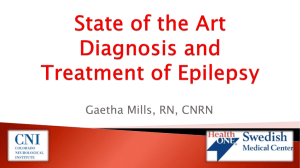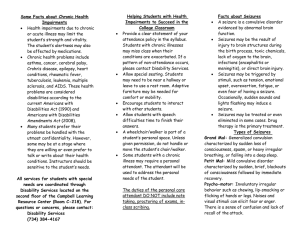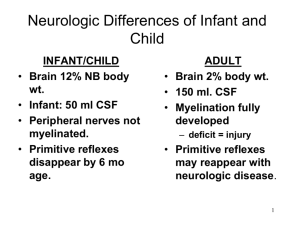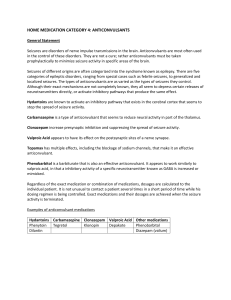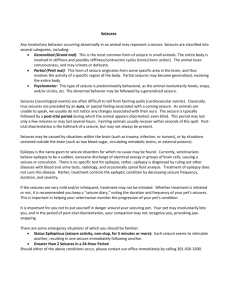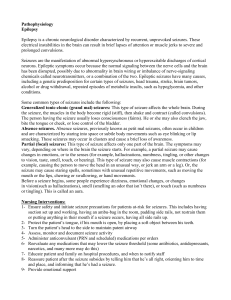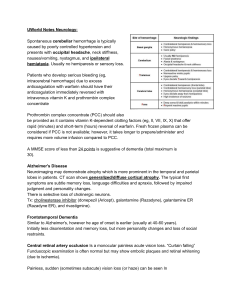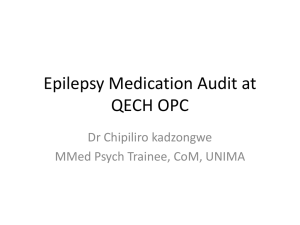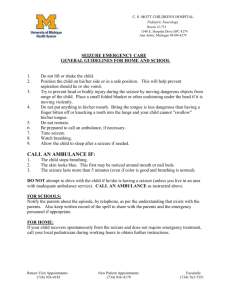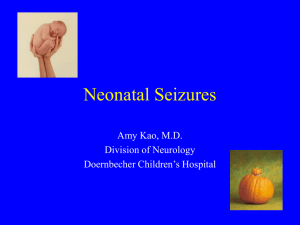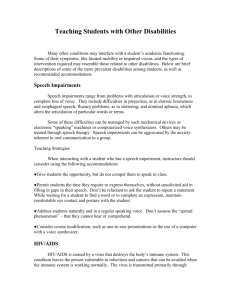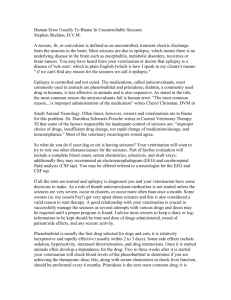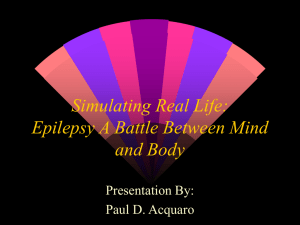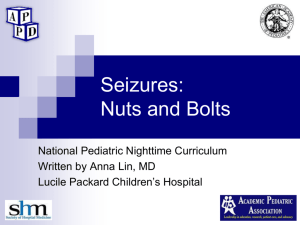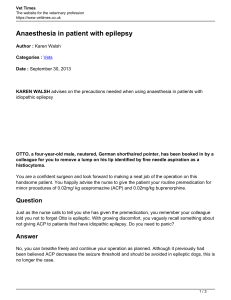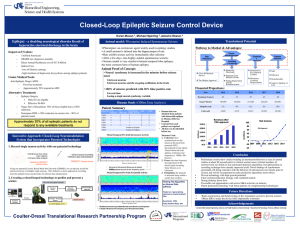Seizure Disorder - Lakeland Care District
advertisement
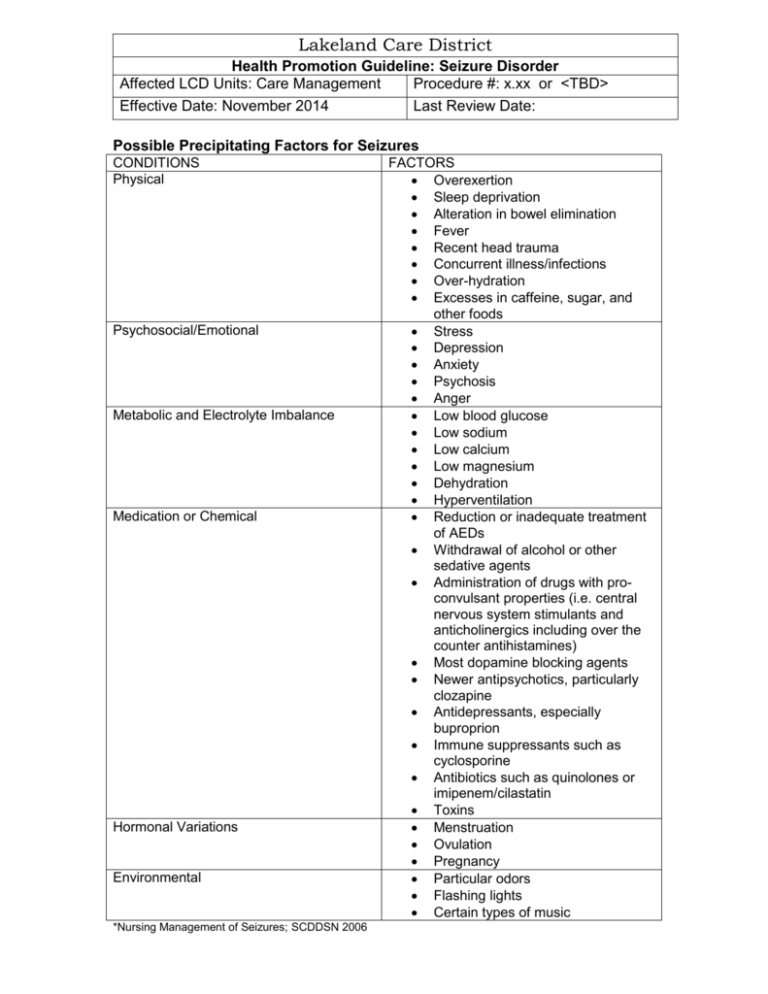
Lakeland Care District Health Promotion Guideline: Seizure Disorder Affected LCD Units: Care Management Procedure #: x.xx or <TBD> Effective Date: November 2014 Last Review Date: Possible Precipitating Factors for Seizures CONDITIONS Physical Psychosocial/Emotional Metabolic and Electrolyte Imbalance Medication or Chemical Hormonal Variations Environmental *Nursing Management of Seizures; SCDDSN 2006 FACTORS Overexertion Sleep deprivation Alteration in bowel elimination Fever Recent head trauma Concurrent illness/infections Over-hydration Excesses in caffeine, sugar, and other foods Stress Depression Anxiety Psychosis Anger Low blood glucose Low sodium Low calcium Low magnesium Dehydration Hyperventilation Reduction or inadequate treatment of AEDs Withdrawal of alcohol or other sedative agents Administration of drugs with proconvulsant properties (i.e. central nervous system stimulants and anticholinergics including over the counter antihistamines) Most dopamine blocking agents Newer antipsychotics, particularly clozapine Antidepressants, especially buproprion Immune suppressants such as cyclosporine Antibiotics such as quinolones or imipenem/cilastatin Toxins Menstruation Ovulation Pregnancy Particular odors Flashing lights Certain types of music Considerations for Planning Daily Care – Seizure Disorders General Health 1. Avoid constipation, excessive fatigue, hyperventilation and stress because they may trigger seizures. 2. Seizures may increase around the time of menses. 3. Fever may trigger seizures; therefore, the fever and underlying cause must be treated. If antibiotics are ordered, interactions with anti-epileptic drugs (AEDs) should be evaluated. 4. Environmental and recreational risk factors that should be avoided or minimized: a. Electric shocks b. Noisy environments c. Bright, flashing lights d. Poorly adjusted televisions or computer screens 5. Showers, rather than tubs baths, should be taken, when possible. 6. Good oral hygiene and regular visits to the dentist are important to minimize effects of gingival hyperplasia that can occur from some AEDs. Diet 1. A well balanced diet should be eaten at regular times. 2. Coffee and other caffeinated beverages should be limited to a moderate amount. 3. Fluid intake should be between 1,000 to 1,500 ml per day (depending on the weather). 4. Alcoholic beverages should be avoided. Physical Activity 1. Regular activity and exercise should be encouraged. Activity tends to inhibit rather than increase seizures. However, over-fatigue and hyperventilation should be avoided. When possible, exercise should take place in climate-controlled settings. 2. Activities that could harm the patient should be avoided. The person may swim if accompanied by someone who knows what to do if a seizure occurs. The person should wear a life jacket and stay in relatively shallow water to facilitate seizure management should a seizure occur. 3. Regular sleep patterns are important. REFERENCES 1. Nursing Management of Seizures a. American Association of Neuroscience Nurses (1997). Clinical guideline series: Seizure assessment. Author: Chicago. b. Hickey, J.V. (2003). The clinical practice of neurological and neurosurgical nursing, (5 th ed.). Philadelphia: Lippincott. c. American Epilepsy Association (2004). Clinical Epilepsy. Retrieved on August 29, 2005 from http://www.aesnet.org/visitors/ProfessionalDevelopment/MedEd/ ppt/ppts03/clinicore.pdf


